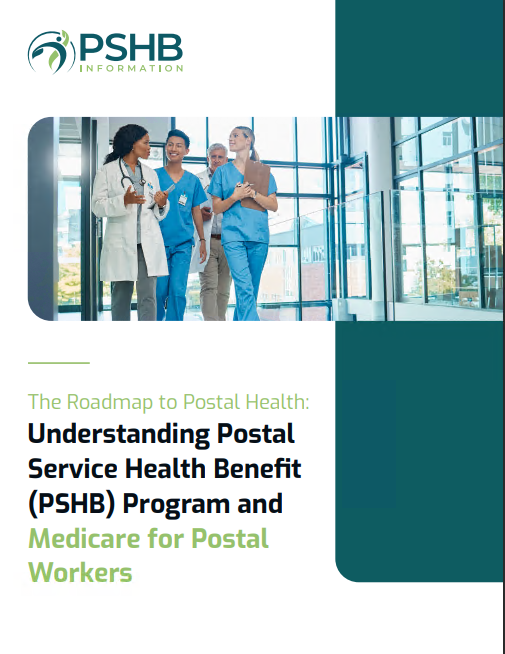Key Takeaways:
- Understanding PSHB health plan options is crucial for making informed choices that suit your needs and lifestyle in 2025.
- Knowing the key dates and changes for the upcoming year can help you navigate the PSHB selection process effectively.
How to Make the Best PSHB Health Plan Choices for 2025
The Postal Service Health Benefits (PSHB) Program is undergoing changes in 2025 that will impact the options available to USPS employees, retirees, and their dependents. With these changes on the horizon, making the best health plan choice requires careful consideration of your healthcare needs, budget, and the specifics of the available plans. This guide will provide you with essential tips and strategies to navigate the PSHB selection process in 2025, ensuring you choose a plan that offers the right balance of coverage, cost, and convenience.
Key Changes to the PSHB Program in 2025
Understanding the key changes to the PSHB Program in 2025 is crucial for making informed decisions. The new regulations and plan structures will likely differ from those in previous years, requiring USPS employees and retirees to re-evaluate their health insurance choices. Notably, in 2025, the PSHB will fully transition to its new platform, separating it from the Federal Employees Health Benefits (FEHB) Program, which it had previously been a part of. This change is designed to tailor the health plans more specifically to the needs of USPS employees and retirees.
Another significant change is the introduction of Medicare integration for eligible retirees. For those turning 65 in 2025, understanding how PSHB plans interact with Medicare Part A and Part B will be essential. This integration aims to provide better-coordinated care and potentially lower out-of-pocket costs for retirees. Therefore, it’s important to review how the PSHB plan coordinates with Medicare and what additional coverage it might offer.
Evaluating Your Healthcare Needs
Before selecting a PSHB health plan for 2025, it’s important to thoroughly evaluate your healthcare needs. Consider the following factors:
-
Current Health Status: Assess your current health status and any ongoing medical conditions. If you have chronic health issues that require regular medical care or medications, you may need a plan with comprehensive coverage that minimizes out-of-pocket expenses.
-
Family Needs: If you’re selecting a plan that covers dependents, their health needs are just as important. Consider their medical history, expected healthcare needs for the upcoming year, and whether they require specialized care or medications.
-
Preferred Healthcare Providers: Many plans within the PSHB network have specific provider networks. If you have preferred doctors or specialists, check whether they are included in the plan’s network to avoid higher costs associated with out-of-network care.
-
Prescription Drug Coverage: If you or your dependents take regular medications, it’s crucial to review the prescription drug coverage of each plan. Some plans may offer more favorable terms for certain medications, while others might have higher copayments or limited formularies.
Comparing Plan Costs
Understanding the cost structure of each PSHB plan is essential for making the best choice. Costs associated with health plans typically include premiums, deductibles, copayments, and coinsurance.
-
Premiums: While the premium is an important consideration, it shouldn’t be the only factor in your decision. A lower premium plan might come with higher out-of-pocket costs, so it’s important to weigh the total potential cost.
-
Deductibles: The deductible is the amount you must pay out-of-pocket before your insurance starts covering certain services. Plans with higher deductibles often have lower premiums, which can be beneficial if you don’t expect to need much healthcare.
-
Copayments and Coinsurance: These are the costs you share with your insurance for services and medications. Plans with lower copayments and coinsurance rates might be more suitable if you anticipate frequent doctor visits or expensive treatments.
It’s also worth considering how each plan’s cost structure fits with your expected healthcare usage. For instance, if you anticipate needing frequent medical care or prescriptions, a plan with a higher premium but lower out-of-pocket costs might be more economical in the long run.
Utilizing Available Resources
When selecting a PSHB plan, it’s crucial to utilize all available resources to make an informed decision. These resources include:
-
Plan Comparison Tools: Use the plan comparison tools provided by the PSHB program. These tools can help you compare the costs, coverage, and provider networks of different plans side by side.
-
Benefit Summaries: Review the benefit summaries for each plan. These summaries provide an overview of what each plan covers, including details about covered services, prescription drug coverage, and any exclusions or limitations.
-
Customer Service: If you have specific questions about a plan, don’t hesitate to contact the plan’s customer service department. They can provide detailed information about coverage, costs, and provider networks.
-
Licensed Insurance Agents: Consulting with a licensed insurance agent can also be beneficial. They can help you understand the nuances of different plans and guide you towards the best choice based on your individual needs.
Considering Medicare Integration for Retirees
For USPS retirees who will turn 65 in 2025, it’s important to understand how the PSHB plan you choose will integrate with Medicare. Medicare integration can affect your out-of-pocket costs and the overall coverage you receive. Here are some key considerations:
-
Medicare Parts A and B: If you’re eligible for Medicare, you’ll need to decide whether to enroll in Medicare Parts A and B. Part A covers hospital care, while Part B covers medical services like doctor visits and outpatient care. Some PSHB plans may require you to enroll in both parts to receive full benefits.
-
Medicare Advantage Plans: Some retirees may consider enrolling in a Medicare Advantage Plan, which combines Medicare Parts A and B into a single plan. These plans often include additional benefits, such as dental and vision coverage, which might be advantageous depending on your needs.
-
Prescription Drug Coverage: Review how the PSHB plan’s prescription drug coverage works with Medicare Part D, the Medicare prescription drug plan. Ensure that the medications you need are covered under both programs to avoid gaps in coverage.
Navigating Open Season and Key Deadlines
Open Season is the designated period each year when USPS employees and retirees can make changes to their health plan selections. For 2025, Open Season is expected to run from November 11 to December 9, 2024. During this time, you can enroll in a new plan, change your current plan, or make adjustments to your coverage levels.
-
Review Your Current Plan: Before making any changes, review your current plan to see if it still meets your needs. Consider any changes in your health status, family circumstances, or financial situation that might warrant a switch to a different plan.
-
Research New Plan Options: If you’re considering switching plans, start researching your options as early as possible. Take the time to review plan benefits, costs, and provider networks to ensure you make an informed decision.
-
Submit Changes on Time: Ensure that you submit any changes to your plan during the Open Season period. Missing the deadline could result in being locked into a plan that doesn’t fully meet your needs for the upcoming year.
Special Considerations for Retirees
Retirees have unique considerations when selecting a PSHB health plan. As a retiree, your healthcare needs may be different from those of active employees, and you may also be eligible for Medicare. Here are some special considerations:
-
Long-Term Care Coverage: If you anticipate needing long-term care services in the future, consider how each plan covers these services. Some plans may offer better coverage for nursing home care, home health care, or other long-term care services.
-
Supplemental Insurance: Depending on your health needs, you may want to consider supplemental insurance, such as a Medigap policy, to cover costs not included in your PSHB plan. This can help reduce out-of-pocket expenses, particularly if you have significant healthcare needs.
-
Retiree-Specific Benefits: Some PSHB plans may offer benefits specifically for retirees, such as discounts on gym memberships, wellness programs, or preventive care services. These benefits can be valuable for maintaining your health and well-being during retirement.
Final Thoughts on Selecting the Right PSHB Plan
Selecting the best PSHB health plan for 2025 requires a thorough understanding of the available options, careful consideration of your healthcare needs, and strategic planning around costs and coverage. By staying informed about the changes to the PSHB program and using all available resources, you can make a well-informed decision that ensures you and your family are covered for the year ahead.
Looking Ahead: Preparing for Health Plan Choices in 2025
As 2025 approaches, now is the time to start planning your PSHB health plan selection. By understanding the key changes, evaluating your healthcare needs, and utilizing available resources, you can make a confident and informed choice. Remember to review your plan options during Open Season and consider how any changes might affect your coverage. With careful planning, you can ensure that you’re well-prepared for any healthcare needs that may arise in the coming year.
Contact Information:
Email: [email protected]
Phone: 3615551234





